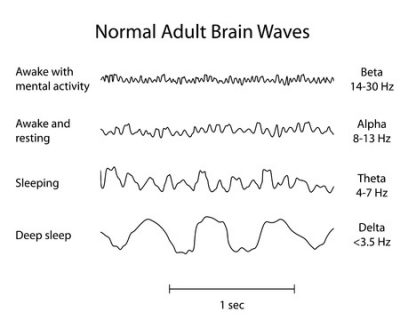 We are so fortunate to live in an age where we can see the functioning of a living brain in real-time. fMRI scanners and EEG monitors are transforming our scientific understanding of the brain and how the mind affects our health and wellbeing.
We are so fortunate to live in an age where we can see the functioning of a living brain in real-time. fMRI scanners and EEG monitors are transforming our scientific understanding of the brain and how the mind affects our health and wellbeing.
Recently I was able to see an EEG monitor in action whilst attending a professional development workshop at Clifton Practice Hypnotherapy Training (CPHT) in Bristol, where I trained. The practice has purchased an EEG to help students and therapists alike better understand what happens to our clients’ brains during a hypnotic trance.
An EEG (Electroencephalograph) is a non-invasive way of measuring and recording brain activity close to the brain’s surface. It can detect changes in the brain very quickly (microsecond changes). Brain waves are measured and the ones we are most interested in are:
- Beta – indicates wakefulness, alertness, conscious processing of information, can be associated with anxiety
- Alpha – indicates relaxed alertness and meditative states, restful and relaxing, not anxious
- Theta – indicates deep meditative states, daydreaming and automatic tasks
- Delta – indicates deep sleep and restfulness
During the workshop at CPHT willing volunteers were each connected to a neuroheadset, which sent signals to a nearby computer showing a reading of their brain waves. It was fascinating to see the effect of different activities on their brain waves, such as visualising, problem solving and listening to music. The computer software also converts the brain waves to a two-dimensional coloured map of the brain, showing different areas lighting up at different times.
What happens to our brains during hypnosis?
The best part of the day had to be when the course tutor, psychologist Dr Rachel Gillibrand, herself a graduate hypnotherapist from CPHT, guided one of the volunteers into a hypnotic trance. We were able to monitor the changes in brain waves of our volunteer as she went into a deeper state of hypnosis. Just as we would expect, the areas of the brain associated with the meditative state lit up on the screen before our eyes.
During trance both alpha and theta waves increase. In this relaxed state we start to daydream, connections in our neural pathways are renewed and we build new networks of thought. What this means from a therapeutic context is that the brain becomes more receptive to beneficial suggestions, accepting directions to promote positive change. By creating a relaxed state we are able to see solutions to problems more easily and are able to change the way we think in order to feel better, more confident and more in control.
EEG monitors, along with fMRI scanners, are able to provide scientific proof of how our brain changes during hypnosis.

